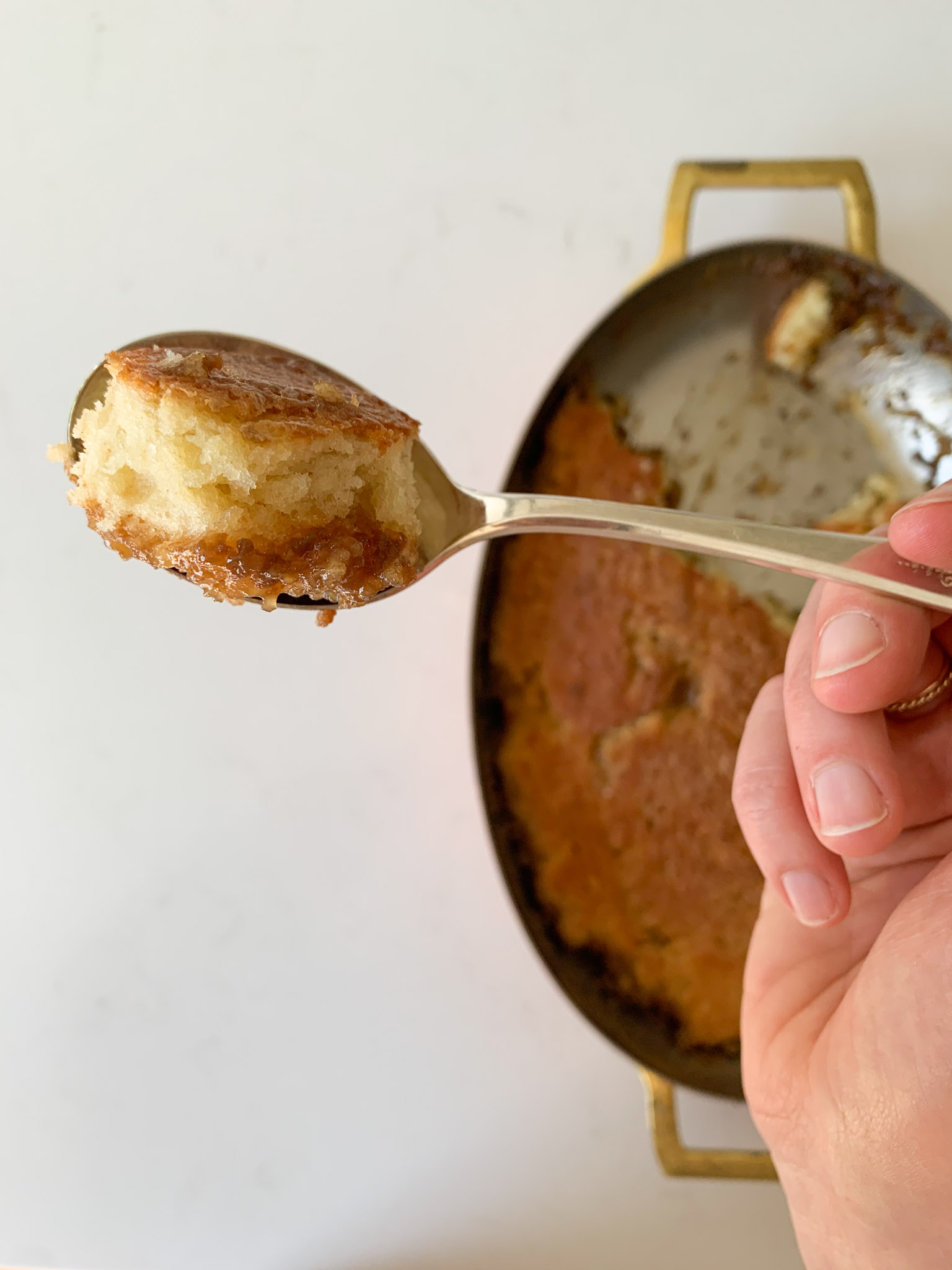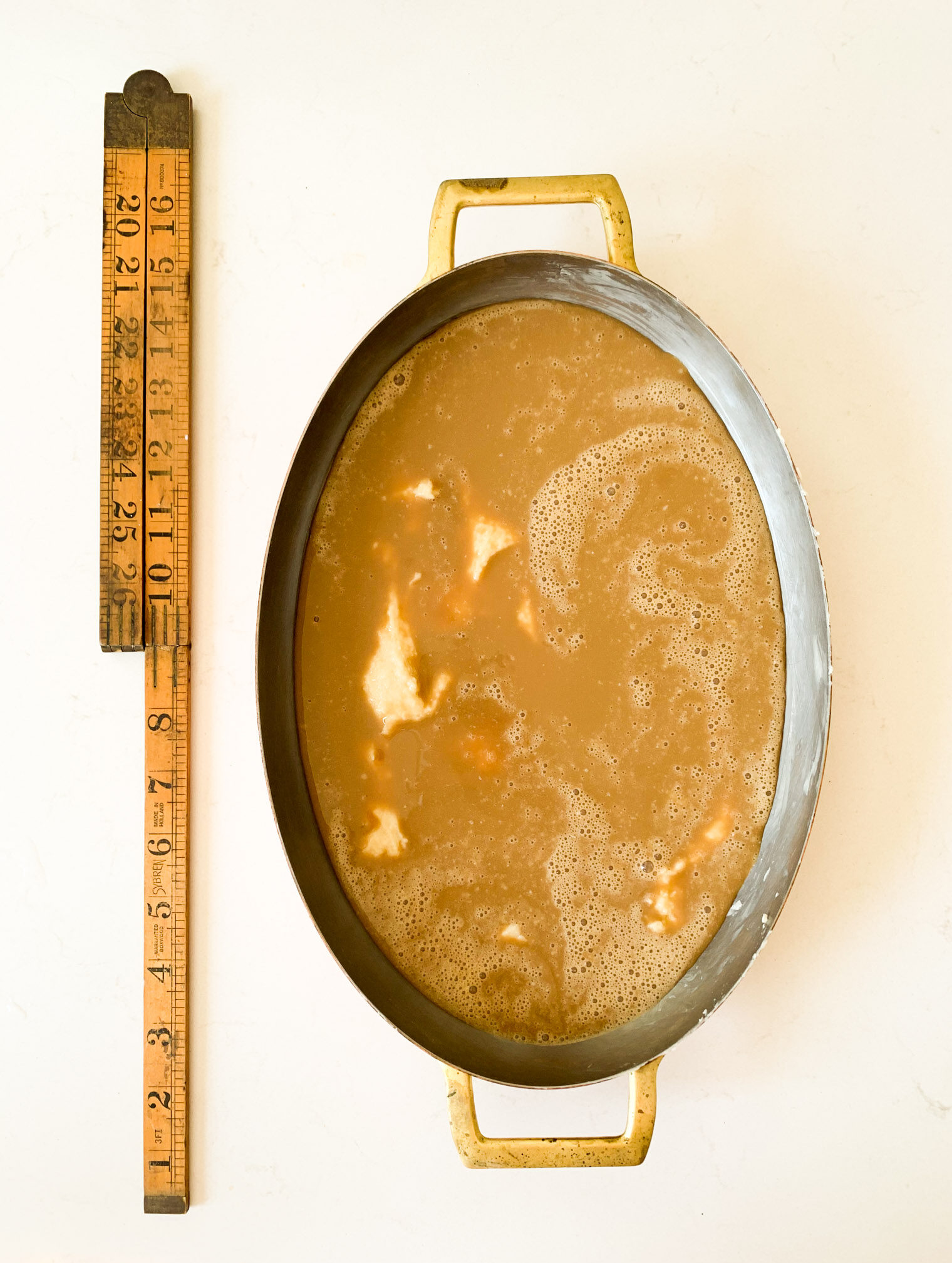
The wind is whipping around my head. It pushes its way inside my hat and deep into my ears, creating the hint of an ice cream headache. I know from experience that a blast of cold – from the wind, diving into ocean, or even a forced icy water blast at the end of a shower – is uncomfortable, but the feeling will fade into euphoria once I’m warm again.
We’re hiking at Polly’s Cove, a piece of barren, craggy coastline dotted with boulders left behind by retreating glaciers. We climb over the rocks and bogs, hands on our hats, and watch seabirds hovering above, unmoving against the wind. My friend finds wintergreen growing along the granite, weaving through scrubby blueberry bushes and vines of juniper. We bite into the thick leaves. Salt and mint is the flavour of this place. Maple syrup too, but that’s further inland, where life is more hospitable.
Back at home, warm and euphoric, I make a cake. The cake is called pouding chômeur – a classic Québécois dessert that literally translates as ‘pudding of the unemployed.’ The recipe, as the story goes, was created by female factory workers during the Great Depression, using ingredients most people had on hand – flour, baking powder, brown sugar, water, cream and butter. The brown sugar, water and cream are meant to mimic maple syrup, a luxury for some, now and then. Modern versions of the recipe call for maple syrup, but today I’m staying authentic.
But brown sugar doesn’t always cut it. It’s 1983 and I’m sitting on the church pew that serves as a bench along one side of our kitchen table. It’s Saturday morning and my mother is at the stove making pancakes, my favourite meal of the week. She scoops batter from a measuring cup and pours circles on the hot pan. A pile of cooked pancakes is forming on a cookie sheet in the warming oven. I have to wait until she’s finished then we can eat them all at once. It’s killing me. But oh no… now she’s heating brown sugar, water and butter in a small pan on the stove. She says she learned this trick from her Dad – a quick maple syrup when you don’t have the real stuff. My heart sinks. This homemade version is watery and makes pancakes soggy. I slump in the pew.
As an act of solidarity I’m choosing the brown sugar version of this ‘pudding’. The lines between a global pandemic and a great depression are blurring; it seems like the right thing to do. I spoon the batter – essentially one large pancake – into a greased pan. Some versions of the recipe suggest pouring the sauce in first while others pour it overtop, drowning the batter in the sweet, creamy liquid. I’ve tried both ways and the end result is always the same – a crispy on the outside, soft in the middle cake with a sweet, saucy pudding below.
I scoop a spoonful of the pudding, the sauce still bubbling at the sides, and take a bite. This is why it’s called a pudding. You need a spoon.
This is the flavour of this place: sweet and warm, a bracing wind and craggy shores. We need it all to balance us, to balance the cake.

Pouding Chômeur – this version uses less ‘sauce’ than most- some recipes double the amount below. Both versions will work; it all depends on what balance you need.
Preheat the oven to 400F / 200C and place a rack in the middle of the oven.
Grease a 9×9 inch / 23 x 23 cm high-sided baking pan – or any high-sided oven-proof dish you have that is close in size. I’ve used this oval number. It’s longer and the cake is thinner. Not ideal, but it works.
⅓ cup (75g) butter, at room temperature
½ cup (100g) white sugar
¼ cup (60ml) milk
1 egg
½ teaspoon vanilla
1 cup (150g) flour
½ teaspoon baking powder
¼ teaspoon salt
1 cup brown sugar
½ cup (125ml) water
½ cup (125ml) cream – 18-35% will do
Beat butter with sugar until combined. Add milk, egg and vanilla and continue to beat until smooth. Sift flour, baking powder and salt together and fold into the butter mixture just until combined – the mixture will be thick.
Meanwhile, whisk brown sugar with water and cream. Set aside.
Spoon batter into prepared pan. Gently pour sauce over batter – it may cover the batter completely, depending on the size of the pan. Place pan on a cookie sheet (to catch any drips) and slide into the preheated oven. Bake for 30 minutes, or until the top is crispy and a tester comes out moist but clean. Allow to cool on a wire rack for a few minutes, then enjoy, warm or cold.
